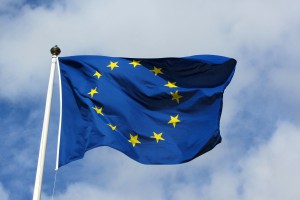EU reaches agreement on content portability
 The European Parliament, the European Commission and member states have reached an agreement on implementing new rules to enable content portability, allowing EU citizens to view services they subscribe to no matter where they are in the Union.
The European Parliament, the European Commission and member states have reached an agreement on implementing new rules to enable content portability, allowing EU citizens to view services they subscribe to no matter where they are in the Union.
The deal is the first covering the modernisation of EU copyright rules proposed in the EU’s Digital Single Market strategy.
Under the new rules, online content service providers will verify their subscribers’ country of residence by using means such as payment details, the existence of an internet contract or by checking the IP address.
All providers that offer paid online content services will have to follow the new rules. However, providers of free services, including the online services of public TV or radio broadcasters, will have discretion in deciding whether to enable portability or not.
The agreed text must now be formally confirmed by the EU Council and the Parliament. Once adopted, the rules will be applicable in all EU Member States by the beginning of 2018 as the Regulation grants providers and right holders a nine-month period to prepare for the application of the new rules.
The agreement on content portability comes at the same time as the end of mobile roaming charges within the EU. Mobile operators will no longer be able to levy roaming charges from June 15 this year, meaning that mobile users will be able to access content using their existing mobile data allowances no matter where they are in the EU.
The EU authorities have been at pains to emphasise the limited impact of the regulation on “the business models of rights holders and service providers”.
The rules will make any provision in existing contracts that limits cross-border portability unenforceable, reducing the scope for legal conflict. The EU is not obliging service providers to ensure quality of delivery across borders, which would incur additional costs.
Service providers will however be obliged to make content available across the same range of devices and under the same rules as it is available in the their home countries.
Commenting on the latest move, EU Commissioner Tibor Navracsics, in charge of education, culture, youth and sport, said: “Digital technologies provide new opportunities to enjoy cultural content on the go, and people are eager to use them. Today’s agreement opens new doors to citizens while at the same time protecting creators and those investing in the production of cultural or sport content. This balanced solution is an encouraging sign for our efforts to build a Digital Single Market that offers new opportunities for both creators and consumers.”
Vice-president in charge of the Digital Single Market Andrus Ansip meanwhile said that the agreement should be followed by others related to proposals to modernise EU copyright rules to ensure wider access to content across borders.
The likely impact of the copyright changes on pay TV and OTT TV service providers, broadcasters and producers is subject to debate, with the Association of Commercial Television in Europe warning that portability rules could undermine the financing of content by limiting right-holders’ ability to sell on a territory-specific basis.
Public broadcasters’ organisation the EBU has been more circumspect, arguing that current legal uncertainty and the variation in copyright rules between member states meant that broadcasters were prevented from making their programmes available online. The EBU has also said it does not believe that all geo-blocking of content will be prevented.
Other groups such as the Independent Film & Television Alliance and producers group PACT have warned that planned copyright changes could have a deleterious impact on investment in TV and film content.
Large pay TV and OTT TV providers are expected to benefit from the changes. However, Tony Gunnarsson, senior analyst at Ovum, told DTVE he did not believe the changes would have a huge impact on OTT service providers.
“For the big guys like Netflix and Amazon, which dominate SVOD in Europe, with market shares of 55% and 15% respectably in 2016 – this is unlikely to have any impact as the two services are already available across the region,” he said.
“In the past, some content available on for example Netflix might be restricted to certain markets depending on the content distribution rights for particular third-party titles. Therefore, when Netflix subscribers travelled abroad the SVOD catalogue they would see would be the one that is available in that particular country where they are – but access would be allowed through normal logins.”
Gunnarsson said that Netflix has shown signs of moving towards a uniform European regional version rather than multiple national versions, with the aim of achieving a 50/50 split between originals and third-party content, and commented that “this new rule may speed up that transition”.
While other regional SVOD platforms such as Sky’s Now TV, HBO Nordic or ViaPlay will have to make their services available across the EU to existing subscribers, Gunnarsson said the impact on the rights market would be limited.
“The implication of this for third party digital content distribution rights is likely to be negligible, as the providers are likely to make the case that there are no new revenues or new subscribers arising as a result. In short, I don’t think the new EU rules will necessarily impact on OTT video business,” he said.



